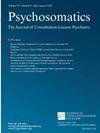领导实践中的皮质醇和睾酮
IF 3.4
Q2 Medicine
引用次数: 0
摘要
本研究试图发现生物学参数是否以及如何预测以下领导相关任务中的领导行为:面对面谈判(研究1)、个人解决问题的案例(研究2)和基于群体的解决问题案例(研究3)。我们复制了Mehta、Mor、Yap和Prasad之前的工作,测试了与睾酮增加和皮质醇减少有关的双激素假说(研究1),但我们的发现没有提供支持双激素假说的证据。在研究2中,我们发现高度开放性是个体解决问题的重要预测因素。研究3的结果表明,开放度越高,集体运动得分越高。我们的研究结果不支持双重激素模型,也不支持Mehta等人报道的卖方特异性效应。原始研究包括64名具有完整激素数据的参与者,而我们的复制研究涉及114名具有完整荷尔蒙数据的参与者。本文章由计算机程序翻译,如有差异,请以英文原文为准。
Cortisol and Testosterone in Leadership Practice
This study sought to discover whether and how biological parameters can predict leadership behavior in the following leadership-related tasks: a face-to-face negotiation (Study 1), an individual problem-solving case (Study 2), and a group-based problem-solving case (Study 3). We replicated previous work by Mehta, Mor, Yap and Prasad in testing the dual-hormone hypothesis related to testosterone increase and cortisol decrease (Study 1), but our findings do not provide evidence to support the dual-hormone hypothesis. In Study 2, we found that high openness was a significant predictor in the individual problem-solving case. The results from Study 3 indicated that higher openness was related to a better score on the group exercise. Our findings did not support the dual-hormone model, and we did not find support for the seller-specific effect reported in Mehta et al. The original study included 64 participants with complete hormone data, while our replicational study involved 114 participants with complete hormone data.
求助全文
通过发布文献求助,成功后即可免费获取论文全文。
去求助
来源期刊

Psychosomatics
医学-精神病学
CiteScore
3.20
自引率
0.00%
发文量
0
审稿时长
6-12 weeks
期刊介绍:
The mission of Psychosomatics is to be the leading psychiatry journal focused on the care of patients with comorbid medical and psychiatric illnesses. The scope of Psychosomatics includes original research, review articles and clinical reports that address psychiatric aspects of medical illnesses and their management. Areas of particular interest include: the effect of co-morbid psychiatric conditions on the management of medical illness; the psychiatric management of patients with comorbid medical illness; educational content for physicians and others specializing in consultation-liaison (C-L) psychiatry; and, the provision of psychiatric services to medical populations, including integrated care.
 求助内容:
求助内容: 应助结果提醒方式:
应助结果提醒方式:


